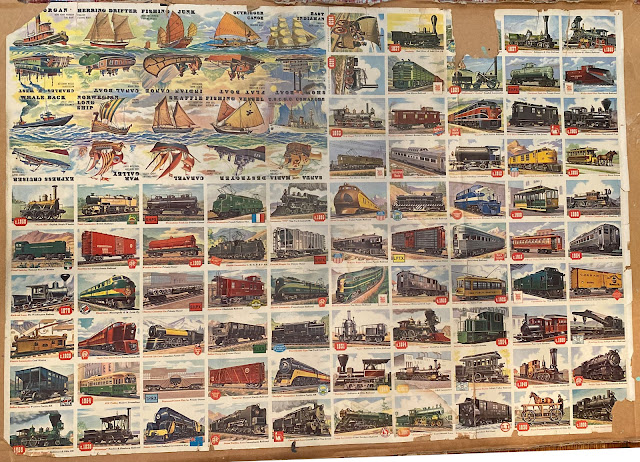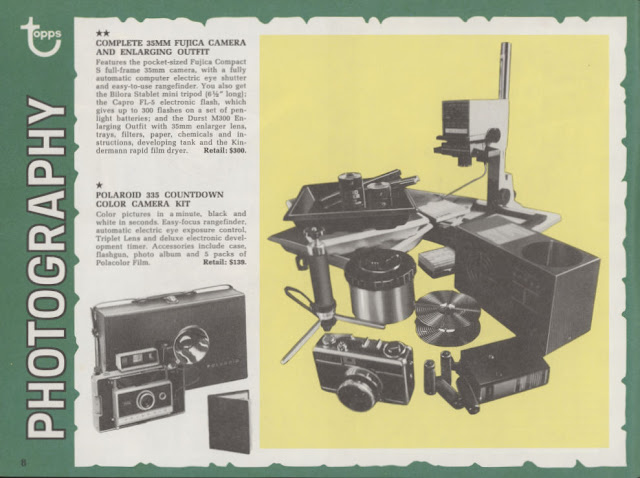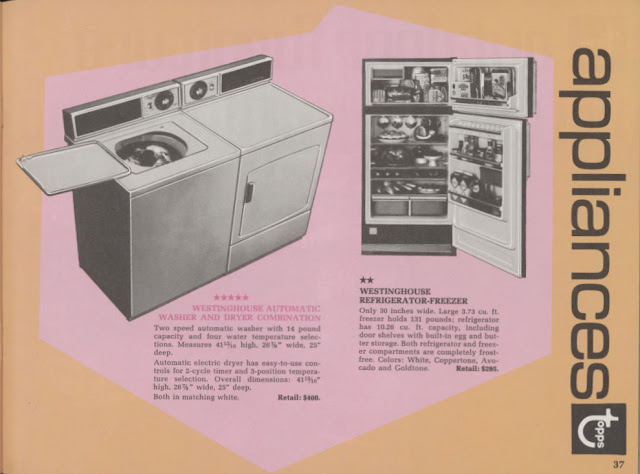I got a ping the other day from a collector named Max Brustmeyer who sent along an uncut half sheet scan from the 1955 Topps Rails and Sails set. In addition to being a useful thing in and of itself, the sheet had a surprise in store:
Yes, it's a 10x10 sheet, so there's 100 cards on this slit. All well and good, but this is a 1955 set and Topps had, from what I know if it, moved to 110 card sheets the year prior, or perhaps I should say a minimum of 110 cards due to the nature of the flip-flops (a method used due to the full bleed tops of each card with Rails and Sails as well). Take a look at this 1954 Baseball sheet offered by Huggins & Scott some time ago now"
So we have a 100 card sheet for Rails and Sails produced well after the (minimum) 110 card sheet containing 1954 Baseball was run. The 1954 Baseball cards were produced by the Lord Baltimore Press, who were the main printers for the company at the time. That brings up the question of who lithographed the Rails and Sails sheet. Was it Lord Baltimore, or perhaps Topps had found their way to Zabel Brothers of Philadelphia in 1955?
Another interesting thing is the "breakage" of the numbers included on the 1954 Baseball slit and the Rails and Sails slit. The numbering on the Baseball sheet covers numbers 126 to 150 and then skips to 176 to 250. The Rails and Sails sheet runs from 1 to 80 (Rails) then jumps to 131 to 150 Sails). The Baseball array is totally arbitrary in 1954 while Rails and Sails in '55 offers two areas of organization: the 4 x 5 block of Sails cards that is partially randomized with the top two rows containing nos. 141 to 150 and the bottom two with nos. 131 to 140, although they are scattered non-consecutively in each row. Below that we get six orderly rows of Rails, or I should say orderly columns as they all run consecutively through a five number top-to bottom sequence that reduces as it moves rightward when viewed from the front. Namely:
26-30 19-24 13-18 7-12 1-6
Then the right half of the sheet goes back to fifty randomly arrayed cards covering nos. 31 to 80. Crazy! The wedging of the Sails in the upper left corner is odd as well, it seems like it would be easier, given their full bleed backs and sides on the reverse (which explains why half are upside down) to just extend them out to full rows:




























